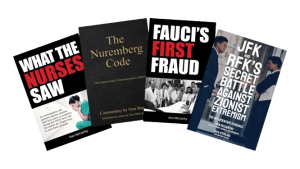Willie Brown: The Formative Years
Been there, done that
Early experiences with election fraud and organized crime
From Willie Brown – A Biography by James Richardson, senior writer for the Sacramento Bee. Published by the University of California Press, 1997.
Election fraud – A star is born
“In helping (Terry) Francois, Brown did not play by the rules. On the day of the election, December 11, 1955, Brown rounded up blacks anywhere he could find them – “bums off the street” Brown recalled – and brought them to the election meeting at Jones Methodist Church. He paid their annual $2 dues and got them a ballot. Roughly one-third of the city’s longshoremen were Negroes, and dozens showed up to vote. Because of Brown packing the meeting, Francois won ninety-seven votes to Kennedy’s eighty-one. Willie had done well for Francoise.
The results would not stand.
Two days later, twenty-one of Kennedy’s supporters privately petitioned the New York NAACP headquarters to throw out the election. Their complaint noted a number of serious: New members were signed up on the spot and allowed to vote, contrary to rules that required them to be on the membership roles for thirty days; there were no secret ballots; the voting was held in a crowded hallway. “Many ballots were marked by people other than those to whom they were issued,” they claimed. Other complaints followed: Ethel Ray Nance, a branch board member, complained that the meeting was packed with burly dock workers. She feared that “the branch may swing beyond control.”
New York NAACP officials were disturbed by what they had heard from San Francisco. Roy Wilkens, executive secretary of the NAACP. responded on January 10, 1956, by suspending the election pending an investigation. It was the beginning of a stormy relationship between Wilkens and Francois and, by extension, between Wilkens and Willie Brown.
On March 16, 1956, the NAACP national board of directors nullified the election and rebuked Francois and his followers.”
Raised on organized crime and official corruption
“Itsie Collins’s casino was on that particular block (Post between Fillmore and Steiner) Unobtrusively called the “Smoke Shop,” it had a counter with cigars and candy in the front. Behind the counter was a door, and behind that door was another door. Behind that was the casino. If the police were lurking, the man selling cigars in front would push a button with his foot setting off a light inside the casino. By the time the police got through the door, the evidence of gambling was removed.
The police regularly collected a cut in return for leaving the casinos alone or going easy when they raided. “You can’t make money unless you make money for them, too,” Collins explained. Collins met a police officer every Monday on the same corner and left an envelope full of cash on the seat of the patrol car.
In recent years, protective of his politician nephew, Collins consistently told reporters that Willie Brown had no involvement in the gambling business in those wide-open days.
But that was not the whole story.
Brown was involved in his uncle’s gambling business. His involvement was unavoidable. Pressed on the subject in an interview for this book, Brown replied that he used his uncle’s shoe-shine chair as a lookout post: “I did during a brief period of working, I think, as a shoe-shine boy at or near where Itsie and his crowd hung out and would on occasion let him know if there was any police around. I was not the watch person, as such, but I certainly wouldn’t want them to get busted.”
From Willie Brown – A Biography by James Richardson, senior writer for the Sacramento Bee. Published by the University of California Press, 1997.



